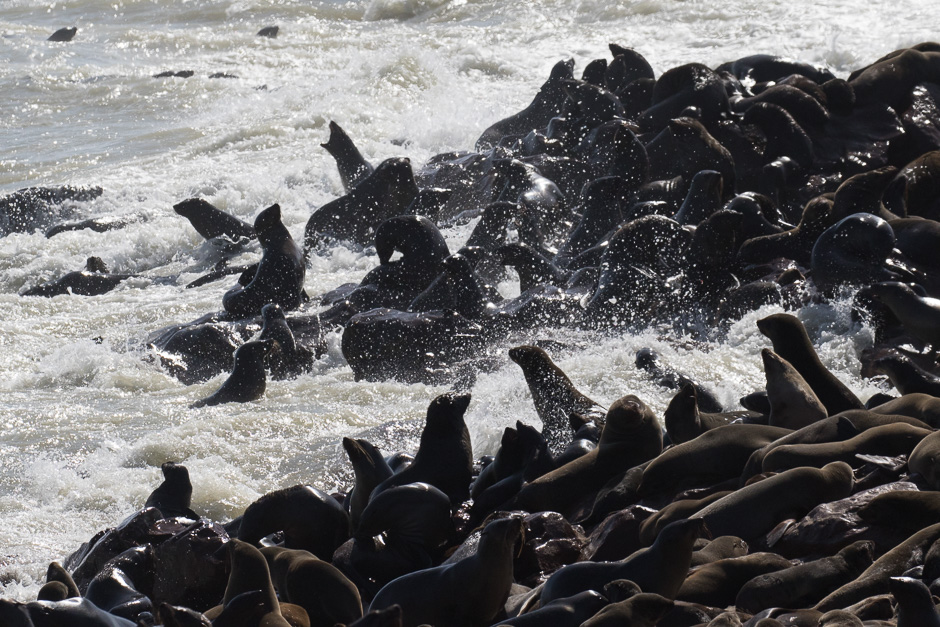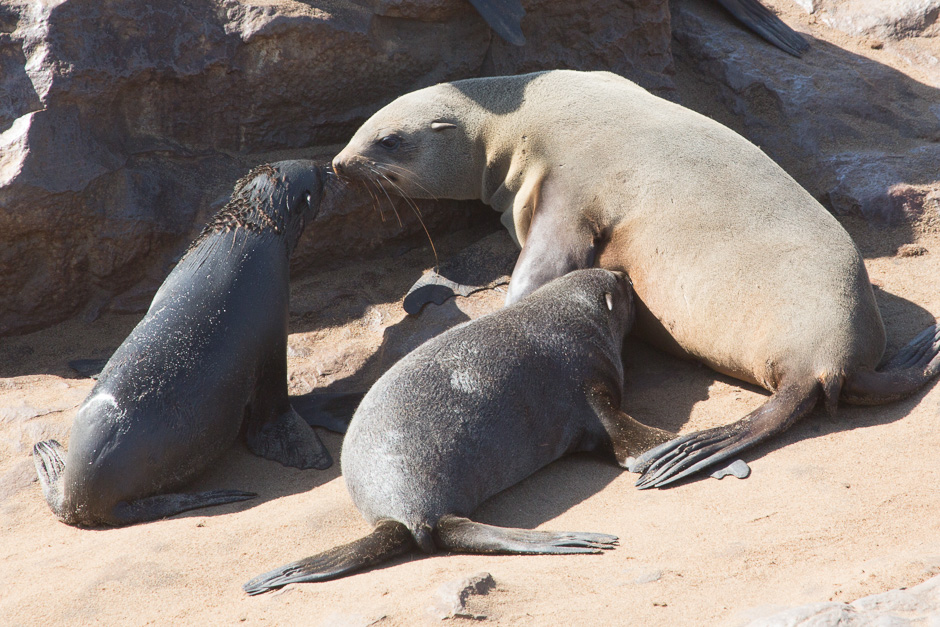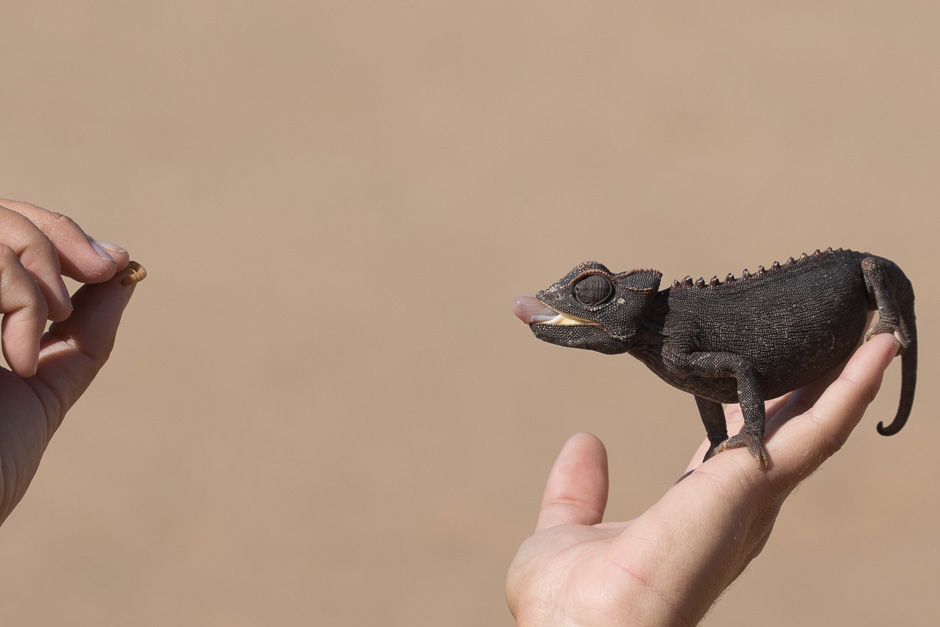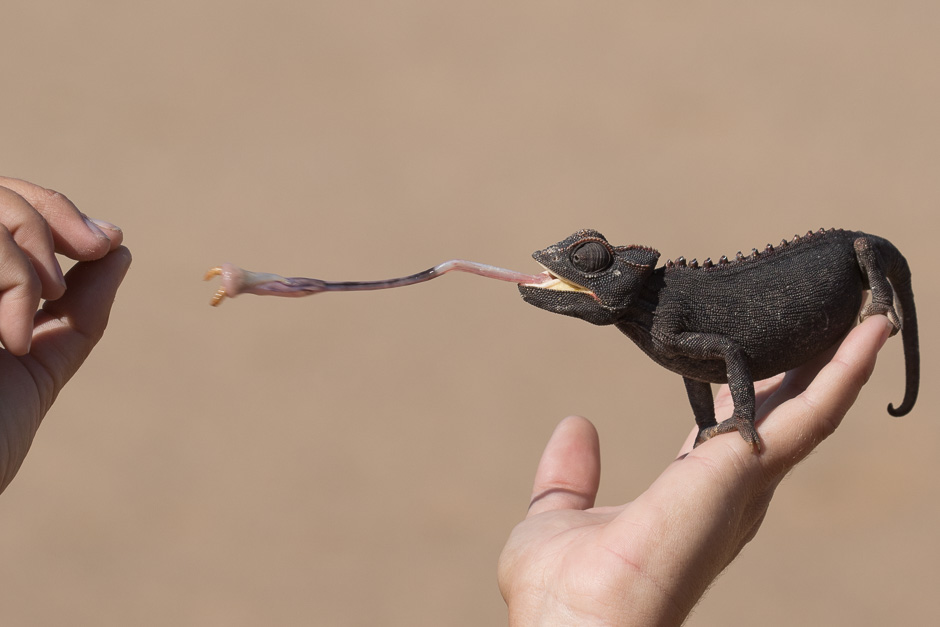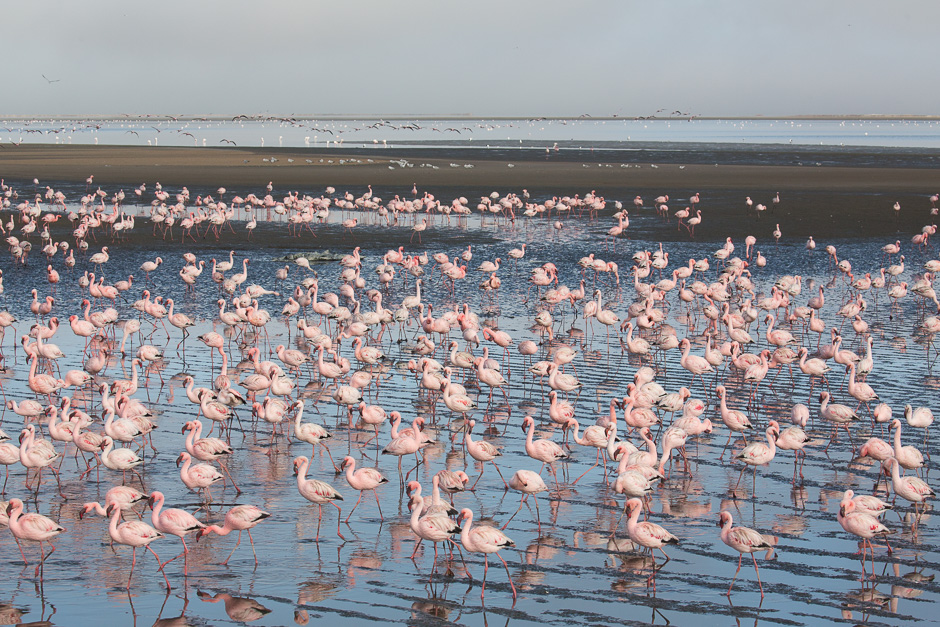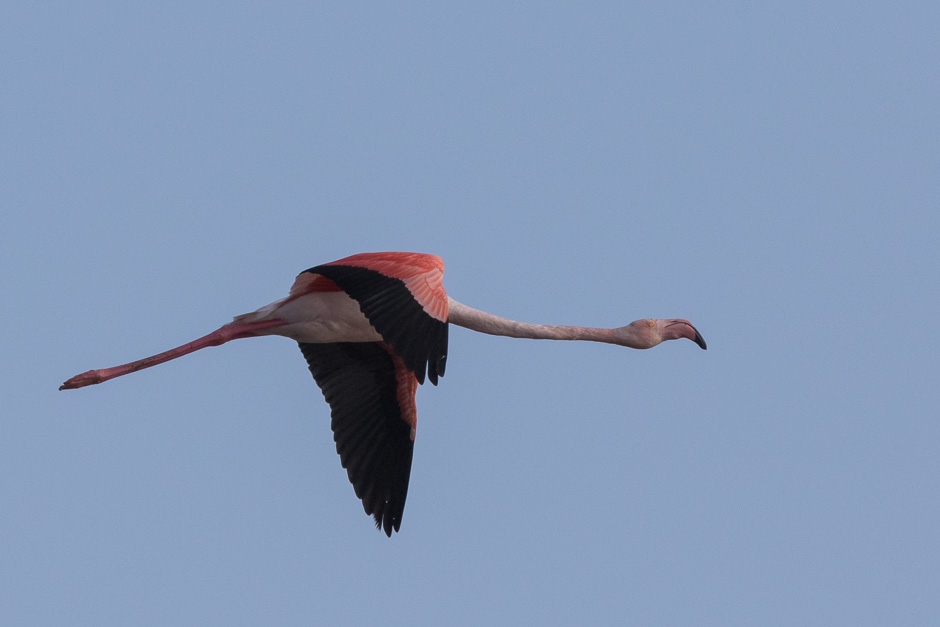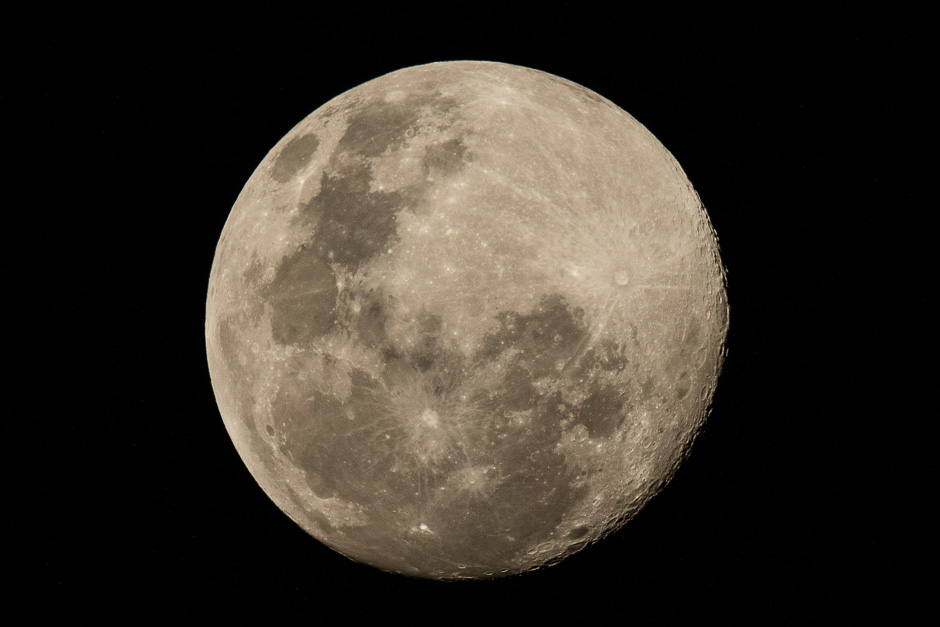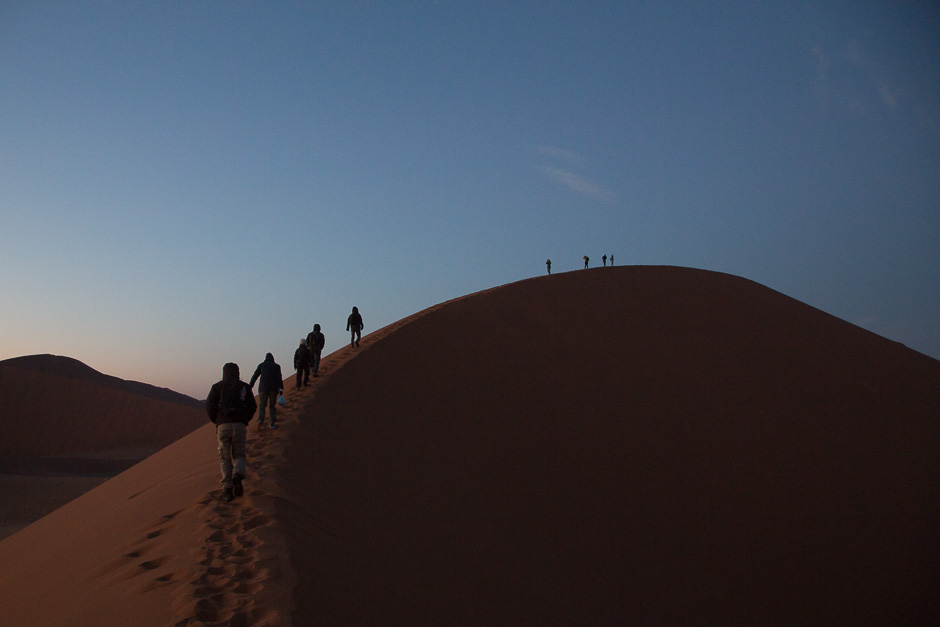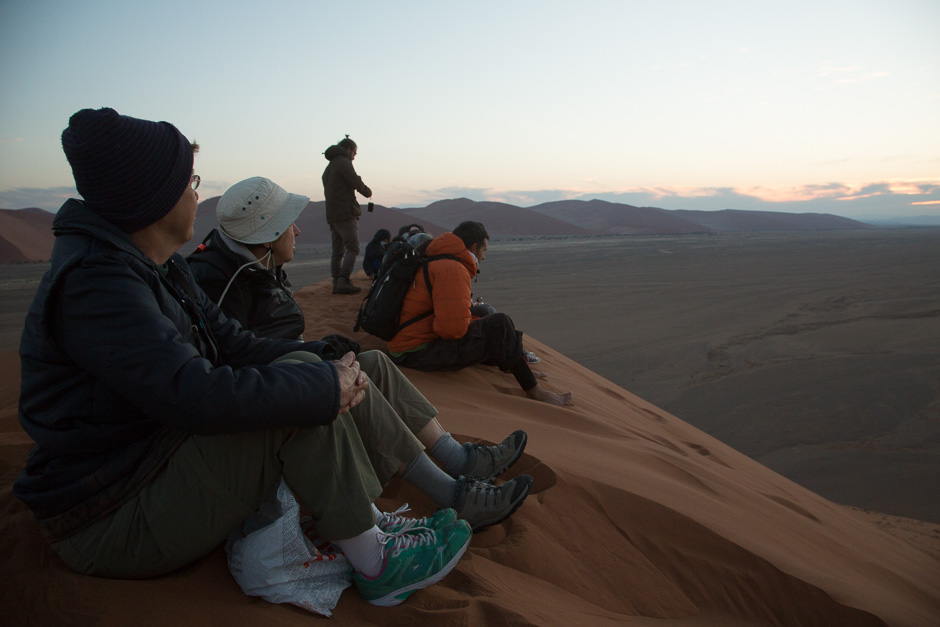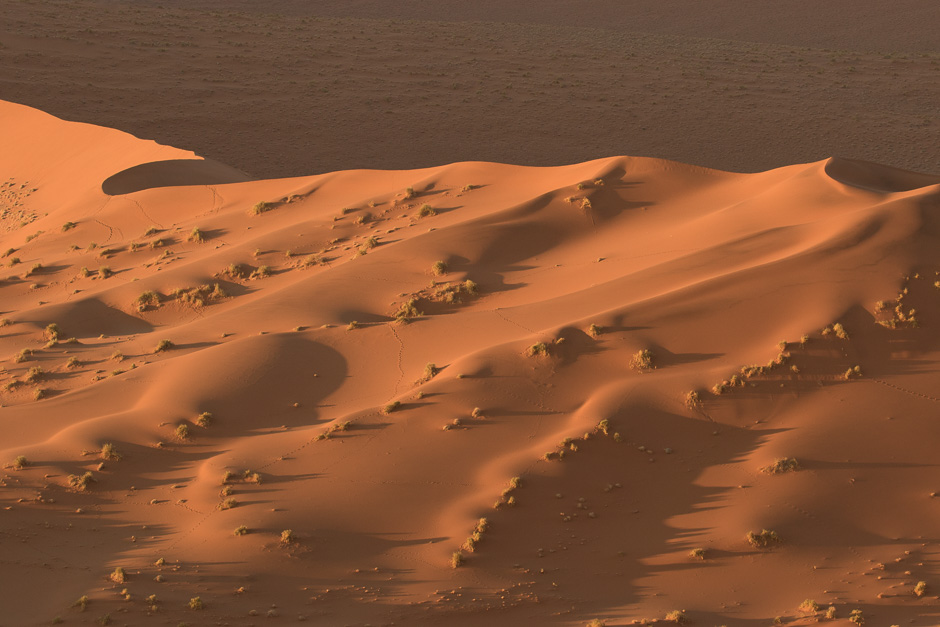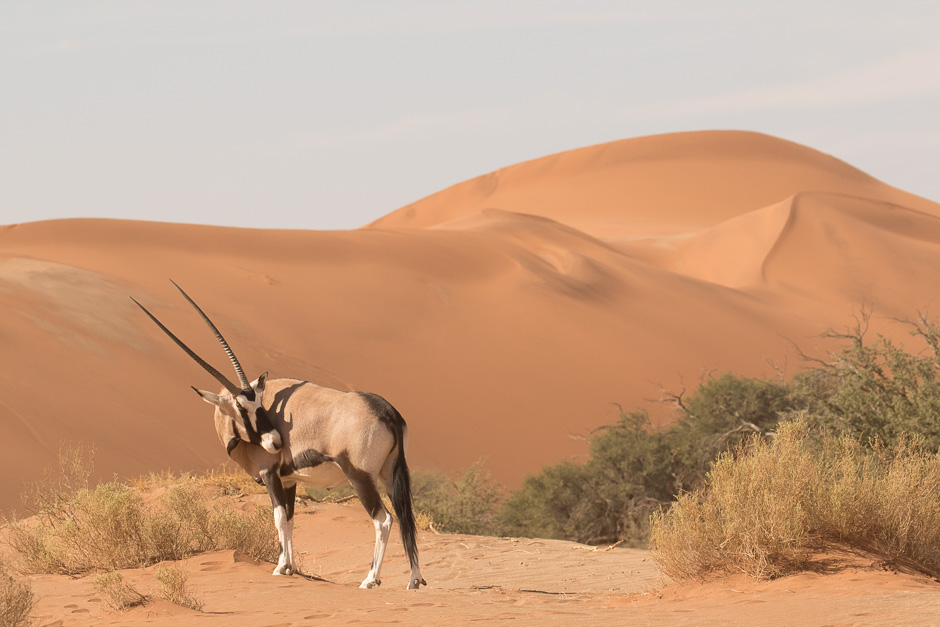The Namib Desert stretches about 1300km from the Angolan border to the northern edge of South Africa alongside of the Atlantic coast. It is considered as the world oldest desert formed around 80 million years ago. The sands transported from the Kalahari Desert are spread by the flow of the ocean and also by the west wind. The southern part of the Namib Desert is listed as the World Heritage site “Namib Sand Sea” in 2013.
The annual rain fall is from 2mm to 200mm depending on the area. Though the rain fall is extremely low, sufficient water is supplied by the fog rising in the coast. Thanks to the fog, there are various living organisms.
ナミブ砂漠は、北はアンゴラ国境付近から南は南アフリカの北端にまで及ぶ約1300kmの大西洋岸沿いの砂漠。ナミブ砂漠は8000万年前頃に形成された世界最古の砂漠とされている。ボツワナのカラハリ砂漠の砂が川の流れによって大西洋に流れ出て、さらに北に向かう海流と西風によって押し流されて形成された。南側の部分がナミブ砂海として2013年に世界遺産として登録されている。
降雨量は、地域によって異なるが年間数ミリから200mm程度までと非常に少ない。しかし、海岸では濃い霧が発生することが多く、水分は霧によって補給されるため、驚くほど多様な生物が生息している。


